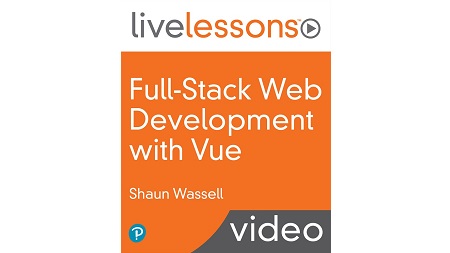
English | MP4 | AVC 1280×720 | AAC 44KHz 2ch | 38 Lessons (6h 12m) | 1.26 GB
Learn how to use Vue, Node.js, Express, and MongoDB to create unique web applications and learn the fundamentals of full-stack development with the MEVN stack.
MEVN (MongoDB, Express.js, Vue, and Node.js) is a popular NEW stack for building full-stack web applications. It allows developers to write an entire application–front-end, back-end, and database–using only JavaScript.
This course takes the approach that its best to learn by doing. It demonstrates the key technologies and possibilities of full-stack development with the MEVN stack.
What You Will Learn
- Build a full-stack meal-planning application using Vue, Node.js, Express, and MongoDB
- Build a front-end with Vue
- Build a server with Node.js and Express
- Implement data storage with MongoDB
- Walk through full-stack integration
- Use REST APIs to load and manage application data
Who Should Take This Course
- JavaScript developers/engineers
- Front-end developers/engineers
- Vue developers/engineers
- Back-end developers/engineers
- Full-stack developers
Table of Contents
Overall Introduction
Lesson 1: Build a Front-End with Vue
1.1 Learn the basics of Vue
1.2 Learn about the example application
1.3 Create and set up the project
1.4 Create the Home page, part I
1.5 Create the Home page, part II
1.6 Create the Add Ingredient page
1.7 Create the Recipe Search page
1.8 Allow users to select and remove recipes
1.9 Create the Shopping List page
1.10 Add styling to the application
Lesson 2: Build a Server with Node.js and Express
2.1 Learn the basics of Node.js and Express
2.2 Create and set up the project
2.3 Add a Load Recipes route to the server
2.4 Add a Load Ingredients route to the server
2.5 Add a Load Meals route to the server
2.6 Add Create routes to the server
2.7 Add Update routes to the server
2.8 Add Update Meal routes to the server
2.9 Add Delete routes to the server
2.10 Create the Recipe Search route
2.11 Generate user shopping lists
2.12 Create the Generate Shopping List route
Lesson 3: Add Data Storage with MongoDB
3.1 Learn the basics of MongoDB
3.2 Install and set up MongoDB Locally
3.3 Add MongoDB to read routes
3.4 Add MongoDB to create routes
3.5 Add MongoDB to update routes
3.6 Add MongoDB to delete routes
Lesson 4: Learn Full-Stack Integration
4.1 Learn the basics of full stack integration
4.2 Load data from the server
4.3 Create data on the server
4.4 Delete data on the server
Summary
Resolve the captcha to access the links!